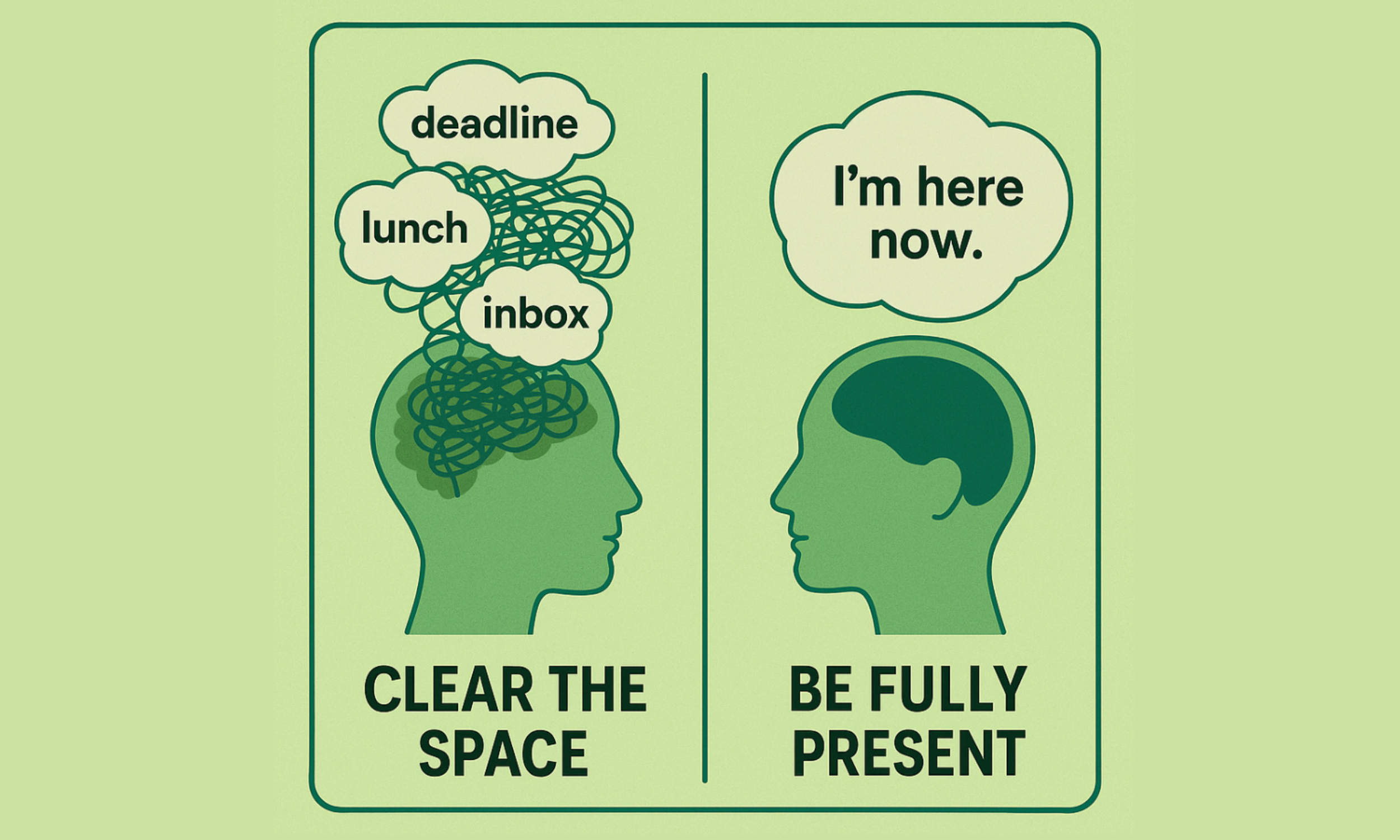The Check-In Smart Leaders Use To Refocus Their Teams
We’ve all been there: rushing from one meeting or call to the next, physically present but mentally elsewhere. The idea is really simple: before diving into a meeting or one-on-one, take a minute to get present—really present. And help your team do the same.
To accomplish this, we recommend the best practice of checking in at the beginning of your meetings using the council process. But leaders aren’t always sure what prompts to provide their team members to make the best use of this time.
Here is a simple yet effective exercise that any leader can use during check-in to help their team feel more connected and present. It’s called Clearing the Space, from the NeuroLeadership Institute. It’s a quick way to help teams focus and reduce distractions.
Before we get to how it works, here’s why it works.
Because teams are made up of human beings, they show up carrying the last meeting, an unread email, or maybe something going on at home. This 3-step check-in helps create a pause—just enough space to bring team members into the moment and remind them that this meeting matters, and that they matter.
Your team cannot do great work together if team members are not present to each other.
Here’s how it works:
1. Name the thought. Take a moment to say out loud one thing that’s lingering in the back of your mind.
2. Name the feeling. Notice the emotion - stress, excitement, nervousness - that the thought brings up for you and share that too.
3. Choose to pause it. Make an intentional decision to set that thought aside for now so you can be fully present.
Here’s an example:
“What’s in the background for me right now is that I’m worried about an upcoming deadline. The emotion I feel is stress, and I’m choosing to set that aside for now so I can be present.”
Leadership Tip: It is important to model this check-in first before asking the team to participate.
Try this simple practice and repeat it until your team feels clear. Most teams find that two to three rounds of council help everyone settle in. You might be surprised at how much lighter and clearer you feel, and how much more connected your conversations become with your team.


